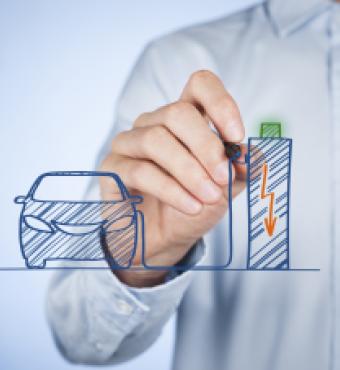Governor Brown’s biggest achievement at the end of the recent legislative session was securing the passage of SB 350, raising the renewable portfolio standard to 50% and doubling the energy efficiency of existing buildings. But the Governor and his legislative ally, Senate President Pro Tem Kevin De León, failed in their effort to include in the law a cut in petroleum use of 50% over the next 15 years. Many press reports attributed this defeat to the heavy lobbying and misleading advertising of the oil companies. While Republican opposition was expected, the moderate Democrats’ defection apparently caught Governor Brown and Speaker Pro Tem De León off guard and ultimately sealed the fate of the gasoline provision.
The defecting faction expressed concern that their low-income constituents would suffer from the restrictions and could not afford to buy the hybrid and electric vehicles that this 50% reduction in gasoline use would have required. Assemblyman Henry Perea of the Central Valley pointed out that his district has “very little mass transit” and that “the idea of halving petroleum really worried my constituents.” Was this concern legitimate or merely a smokescreen for actions that were motivated by campaign contributions and a desire to accommodate the oil industry?
There is some evidence about this in a January Hoover 2016 poll. Using an experimental design, a control group was asked simply whether they agreed or disagreed with the legislature about removing the petroleum use reduction requirement. Fifty percent of the Democrats in the control group disagreed with the legislature (i.e. did not want to see the 50% cut in petroleum use taken out) and only 21% agreed with the legislature.
A separate group in the survey was given the additional information that “This law would have promoted the use of electric and hybrid vehicles to reduce the use of all-gas cars and trucks. But some legislators opposed the law because it would impose hardships on Californians who can only afford older gas fueled cars and who commute to work at distances farther than the current range of most electric vehicles.” Support among Democrats for the legislature removing the gasoline provision increased from 21% to 36%. In addition, 44% of Latinos and 48% of blacks agreed with the legislature’s decision to remove the petroleum provision. We suspect that had we given them even more specific cues about the higher costs of electric vehicles and hybrids, the shift in support would have been even greater. In short, there is reason to believe that the concern among some Democrats was rooted in a real division along socioeconomic lines.
The Governor is a strong proponent for electric vehicles. In 2012, he issued Executive Order B-16-2012, directing California to have at least 1.5 million zero-emission vehicles (ZEVs) on the road by 2025. ZEVs are a mechanism to help reduce California’s greenhouse gas (GHG) emissions and dependence on fossil fuels. According to the California Air Resources Board, 37% of California’s GHG emissions are from the transportation sector. ZEVs offer an opportunity for California to reduce transportation generated GHGs through the tailpipes.
To realize his goal, the Governor will need politically to make ZEVs affordable to low and middle income earners. One approach might be to incentivize them to trade in their inefficient vehicles for either hybrid electric vehicles (HEVs) or ZEVs. This would have the dual purpose of increasing the number of ZEVs and ZEV miles travelled while reducing the number of internal combustion engine (ICE) vehicles, thereby reducing GHG emissions.
This could take the form of the Consumer Assistance Program (i.e. California’s version of “cash for clunkers”) that offers qualified recipients an additional $500 or $1,000 toward the purchase of a new or used HEV or ZEV. To broaden the pool, the state could waive the requirement for low-income consumers needing to fail their most recent smog check. Policymakers could also adjust AB 802 to include a metric for valuing ZEV-enabling infrastructure in multi-unit dwellings (MUDs) and commercial buildings larger than 50,000 square feet. To finance these incentives, the state could impose a 5% surcharge on electricity “super users”—i.e. the top 2.5% of commercial, industrial, and residential consumers. Small businesses would be exempt from this surcharge.
In other words, there are ways that the Governor could address the concerns of low income more directly, but in the end, even a “cash for clunkers type” program is unlikely to allay concerns among many low-income consumers and change their car buying habits in a significant way. Until the costs of electric vehicles come down, the batteries improve, and the infrastructure develops fully, it will be hard to scale up the sales of electric vehicles to all parts of the population.

GREENHOUSE GAS EMISSIONS
In 2006, the California State Legislature passed AB 32, which requires the California Air Resources Board to implement rules in order for California to reduce its greenhouse gas emissions to 1990-levels by 2020. Also in 2006, AB 1803 tasked the Air Resources Board to maintain a greenhouse gas inventory. This inventory accounts only anthropogenic sources – i.e. it ignores natural emissions – and includes estimates for carbon dioxide, methane, nitrous oxides, sulfur hexafluoride, hydrofluorocarbons, perfluorocarbons, and nitrogen trifluoride. In 2013, CO2 represented 84% of GHG emissions.
















